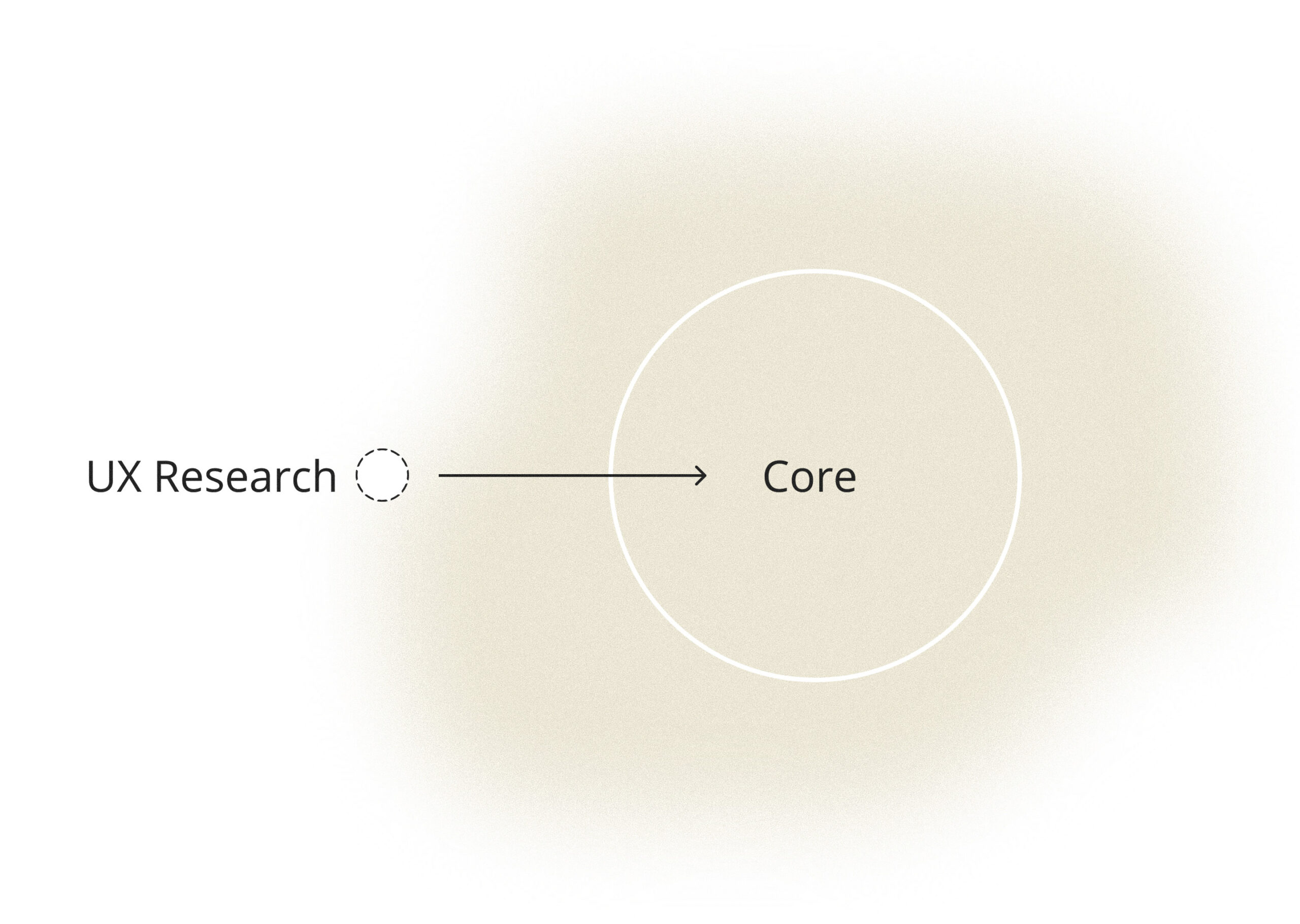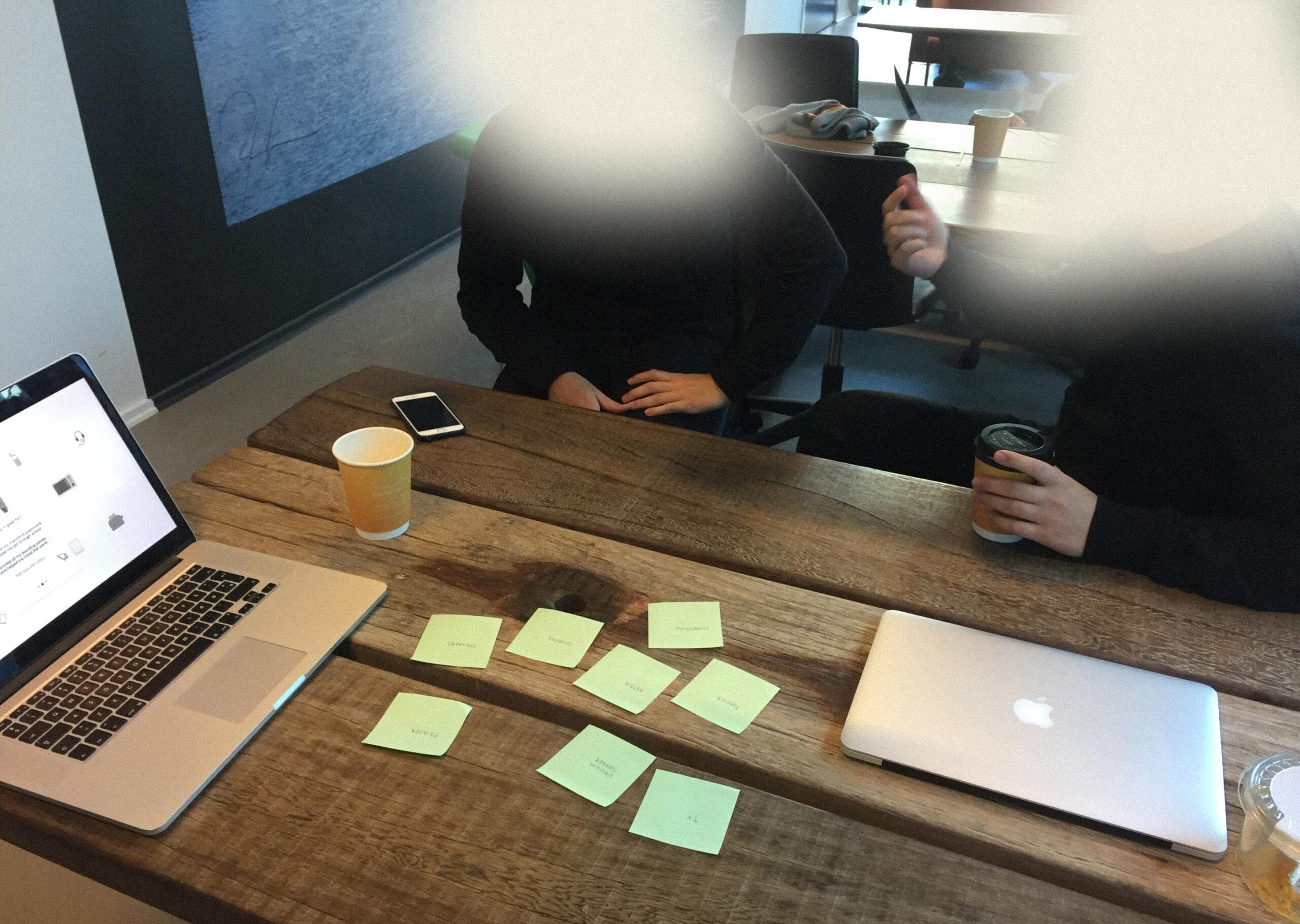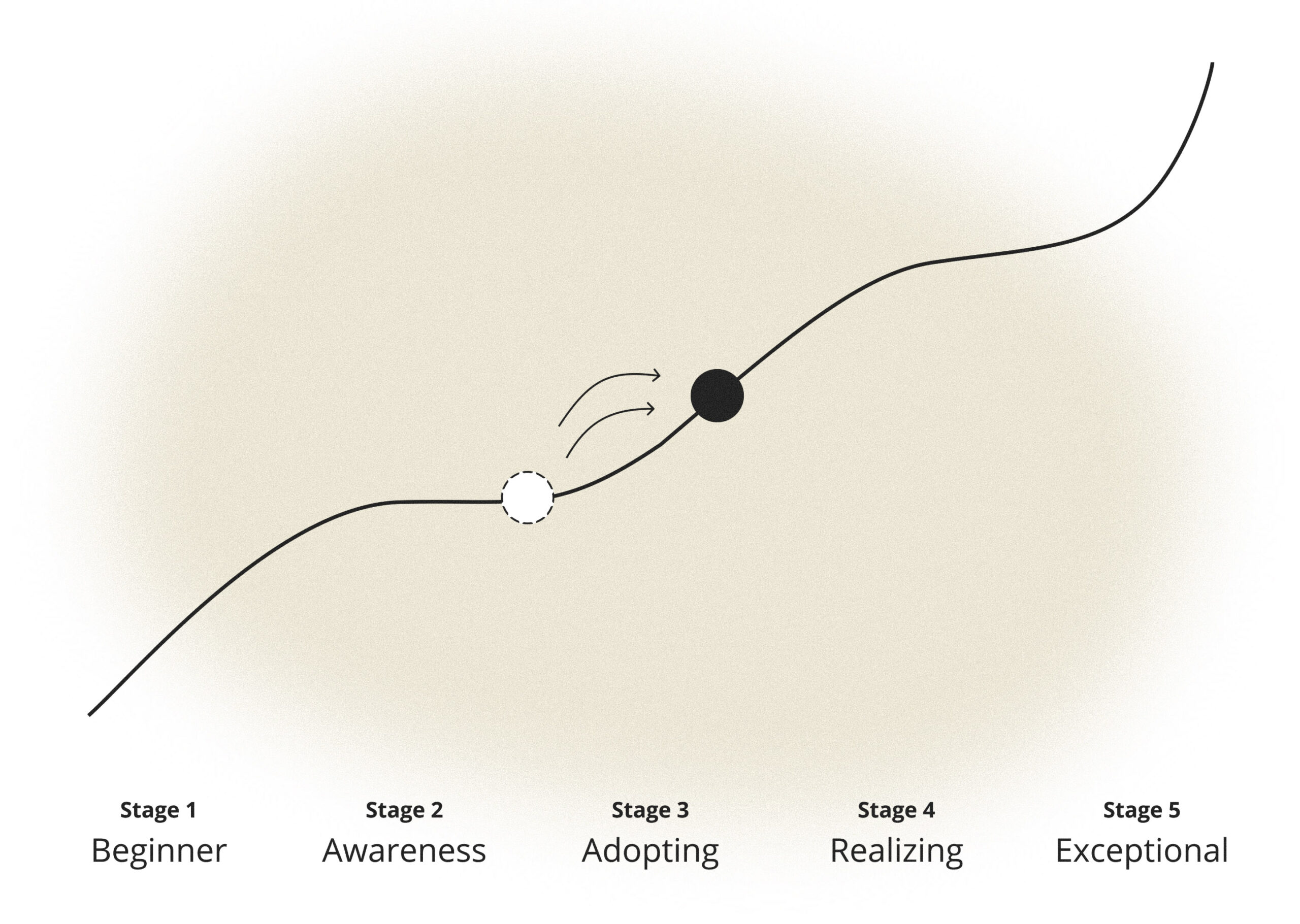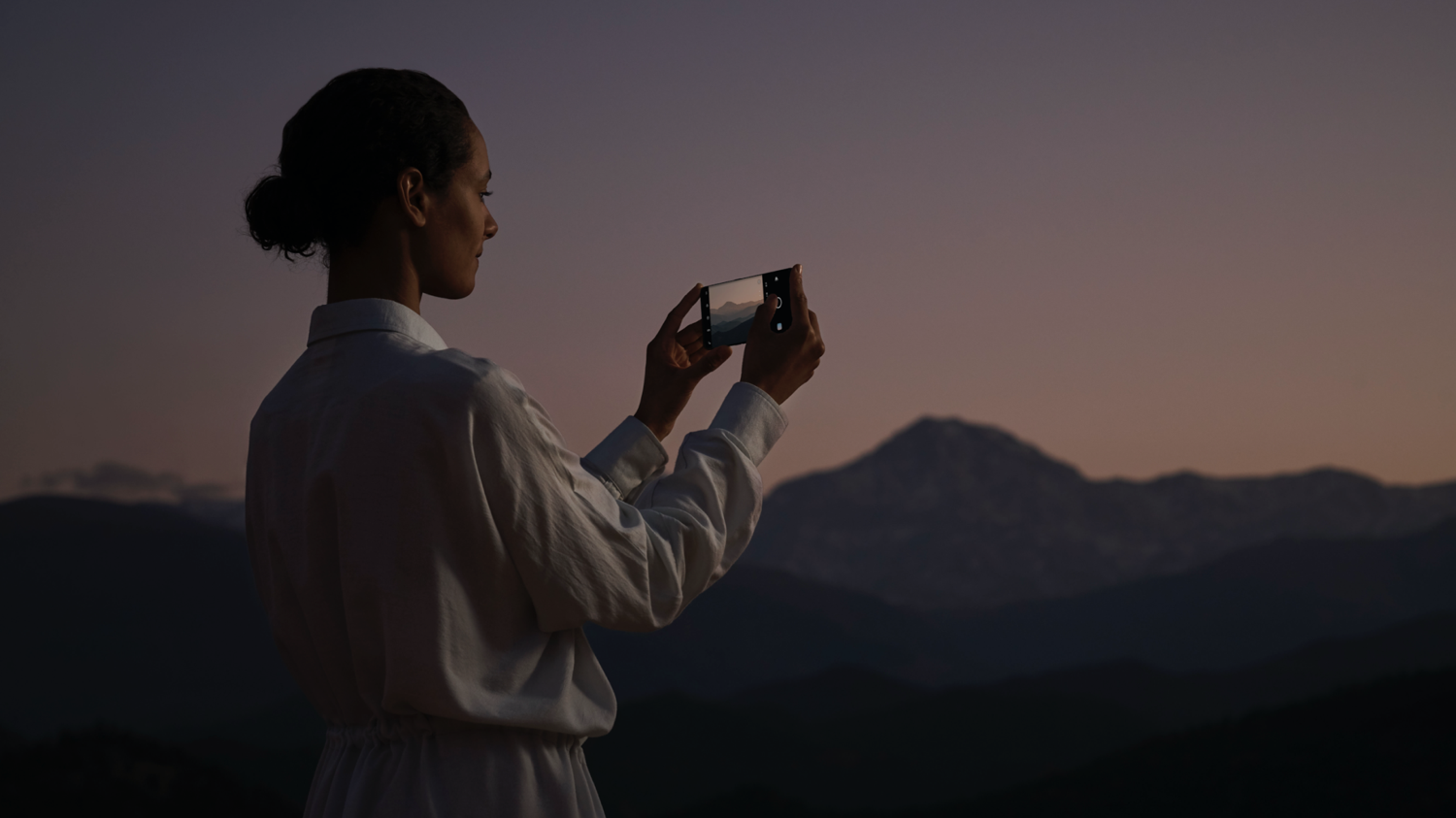Maturing strategic UX Research in the context of a creative studio

Role
UX Researcher
With
Hello Monday
When
2018 to 2020
Introduction
From 2018 to August 2020, I set out to experiment and strategize how Hello Monday might mature their UX Research efforts. To do so, I immersed myself as a UX Designer and Researcher at Hello Monday.
First, as an intern, then as part of conducting my Master’s thesis at the IT University of Copenhagen, and then as a full-time employee spearheading it as a focused UX Research initiative.

Framework for UX Maturity with 5 stages, starting to
be aware of the value of UX Research. From Chapman & Plewes.
My approach was based on ethnographic experimenting with projects and processes allowing me to be close to the rich and context-full reality of developing a more mature UX Research and design process – trying to bring it to the core of Hello Monday’s offerings.
In a nutshell, I found myself conducting UX Research on how to create a lean UX Research setup. Wow, meta.

I was pearheading an initiative to push UX Research to Hello Monday's core offerings.
Opportunity
When I first started at Hello Monday as a UX Design Intern, I saw an opportunity to create a setup to engage users and customers in the creative design process to strengthen design arguments – eventually to make better decisions for business and users.
Arguments based on insights from interviews, usability tests, data analysis, stakeholder workshops, field trips, personas, etc. Through discovery and validation.
Historically, Hello Monday had never had this UX Research-leg inhouse. So that’s what I got to experiment with. Making better-informed design rationales, and making UX Research a billable activity that potentially would lead to new business as well.

Interview + usability test session on target audience for a Danish campaign website.
So, what if a creative studio like Hello Monday could have UX Research as a billable activity giving everyone an opportunity to make better design decisions? That’s what made me tick. Maybe it could even help the team and the clients sleep better at night.
With a let’s do this-commitment to UX Research, we aimed to:
○ Create a more mature Research and Strategy-leg in Hello Monday
○ Make it a hassle-free process in close collaboration with creative design and development
○ Make UX Research an addition that drives and enables design action
○ Develop UX Research as a billable activity
Process
Throughout this 2 year-long experiment, I was part of planning and facilitating UX Research and Design on a broad range of projects. Websites, products, and branding. Two case examples are OPPO, a global website redesign; and Land Rover, a redesign of a social off-roading app – if you want to dig a bit deeper.
During the experiment, I conducted interview sessions with team members and observed the processes to shed light on the experiment’s impact on the design processes. And to inform the UX maturity process ahead. That’s the meta-level.
"They [personas] are not just only nice descriptions of someone we imagine, but we continue working with them in tandem with design, where they help inform our decisions."
From an internal interview understanding the impact of involving and engaging users.
Overall, I found that UX Research activities truly does provide value to the design process and informs decision-making: Being informed around stakeholders, audiences, and their contexts of use, this information becomes ammunition for selling our designs because we are able to vet and argue our designs and speak to audience needs.
It’s absolutely less risky for the client’s business and better for the people experiencing the solutions.
Of course, this argument is stitched together by the strategic expertise and deep knowledge from technology, design, and creativity. It’s just a way to become more informed and tighten the storytelling around why a specific direction matters more thus making better experiences in the end. As Erika Hall puts it: "Research is not optional to a design process because working collaboratively and making good decisions are not optional".

Portrait of an off-roader and his Land Rovers.
Photographed during an immersive field trip.
To assess and evaluate the UX Research maturity I leaned on three different perspectives. These perspectives focused on commitment, infrastructure, and implementation:
There was especially one thing I found to be super valuable in driving towards more commitment, refined infrastructure, and smoother implementation. That was by being lean and rock'n'roll in the tools and methods used on projects (e.g. a guerilla usability test). Be sure to build it as a case. Just a small case.
Showing and "educating" teams and people through case repositories, and how it creates value internal and external – without creating to much fatigue – will eventually drive commitment and make room for UX Research in new client-projects. By then, of course, the UX Researcher is part of the planning and scoping for smoother implementation.
That will drive internal appetite for more UX Research.
With these perspectives, we went from pretty low awareness to actually start adopting and realizing how UX Research fits as a valuable integration to the core offerings.
That’s a big change in how people work together towards goals.

Just starting to adopt and realize UX Research.
Some argue these are the hardest stages.
Of course, nothing is perfect, and iterations and refinements are to-be-done. But I cling to the fact, that we were able to confidently add UX Research to the scopes after these efforts. We bottled and labeled a service. And sold it. That’s a maturity process in the right strategic direction if you ask me.
Canons are ready, so to speak.
Moving on into the future
There are few more perspectives to the UX maturity model I found to be underestimated for agencies dealing with multiple clients. And that’s time and branding.
Where commitment, infrastructure, and implementation are perspectives more focused on the internal dynamics, time and branding are crucial perspectives to focus on the external.
Because how would the clients know that UX Research is a damn good offering when we can’t show much just yet?

With time opens the potential for getting the right clients.
And by that the right cases.
So, these two factors are related: With time opens the potential for getting the right clients. Getting the right clients opens the potential for creating a greater UX Research case repository. With great cases, Hello Monday can potentially more easily attract clients for more UX Research.


